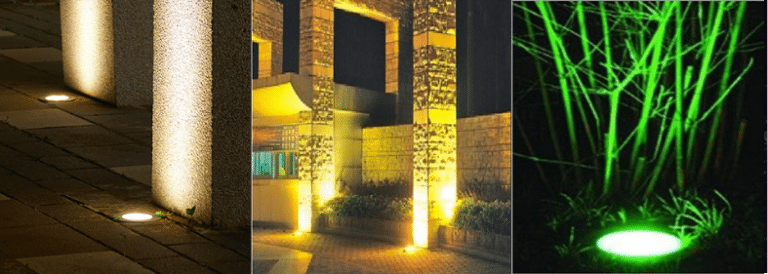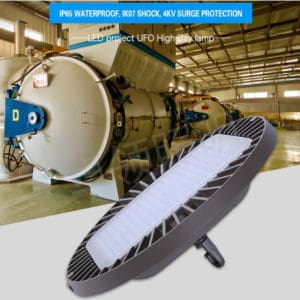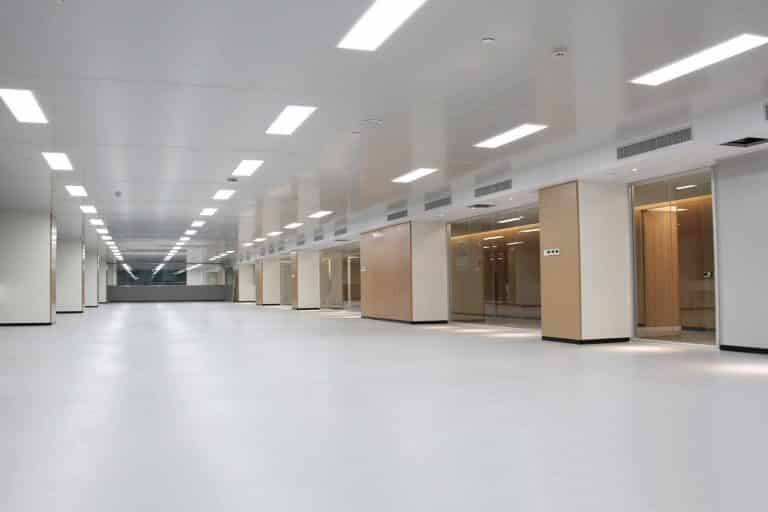The Development of Tunnel Lights
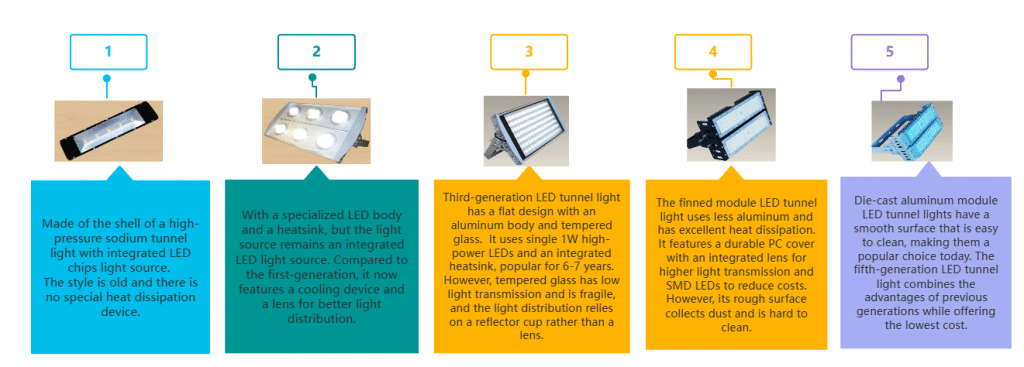
The Structure of LED Tunnel Light
The LED tunnel light mainly consists of the lamp body, heatsink, light source, driver, light-emitting cover, output wire terminals, and stainless steel fasteners.
- Lamp Body: Typically made of aluminum alloy, with die-cast aluminum or finned module structures being common. High-quality bodies are large and thick.
- Heatsink: Modern LED tunnel lights use an integrated heatsink, to know if the lamp has good heat dissipation, you should check the surface area rather than the volume, weight, or thickness. The larger the surface area, the better the heat dissipation.
- Light Source: SMD LED chips and 1w high-power LED are the main light sources. Each module generally contains 50-60 LED chips, around 50W. The quality and price of LED sources vary greatly.
- Driver: Isolated constant current drivers are used. High-quality drivers have features of aluminum shell, full potting, isolation, constant current, flicker-free operation, and high power factor. Different brands LED drivers vary greatly in price and quality. (We GRNLED only use Philip, Meanwell, and Suncome brand drivers for tunnel lights)
- Mounting Bracket: Typically a U-shaped bracket. Quality is determined by the material, thickness, and width.
- Light-Emitting Cover: Generally uses a PC cover with a lens for high-light transmission.
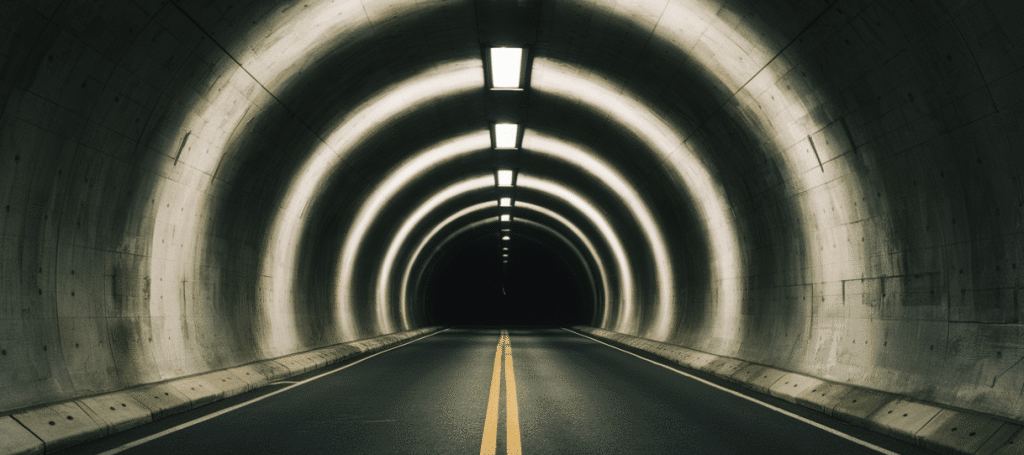
Types of LED Tunnel Flood Light
What are LED tunnel lights?
LED tunnel lights, also known as LED floodlights, are used for wide-area flood lighting in tunnels, workshops, large warehouses, venues, metallurgical plants, various factory areas, and construction sites. They are also ideal for urban landscapes, billboards, and architectural facades for decorative lighting.
LED tunnel lights are classified into three types based on their function: standard LED tunnel lights, dimmable LED tunnel lights, and emergency LED tunnel lights. I believe we are all already familiar with standard LED tunnel lights. Here we mainly talk about LED dimmable and emergency tunnel lights.

Currently, dimmable tunnel lights use either 0-5V or 0-10V dimming, with both positive and inverse logic dimming available. 0-10V dimming method is common and widely used. The principle is to control the brightness of the LED tunnel light by changing the voltage. When the controller outputs 0V, the LED tunnel light turns off; when the controller outputs 10V, the LED tunnel light reaches maximum brightness. In inverse logic dimming, 0V corresponds to maximum brightness, and 10V corresponds to off. Whether it is positive or inverse logic, the brightness was changed by adjusting the voltage output from the controller.
In tunnel lighting, in addition to regular LED tunnel lights or dimmable tunnel lights, a certain number of emergency LED tunnel lights must also be installed. This is to ensure basic safety lighting in the tunnel when the main power supply is disrupted, allowing for evacuation, emergency rescue, and hazard avoidance.
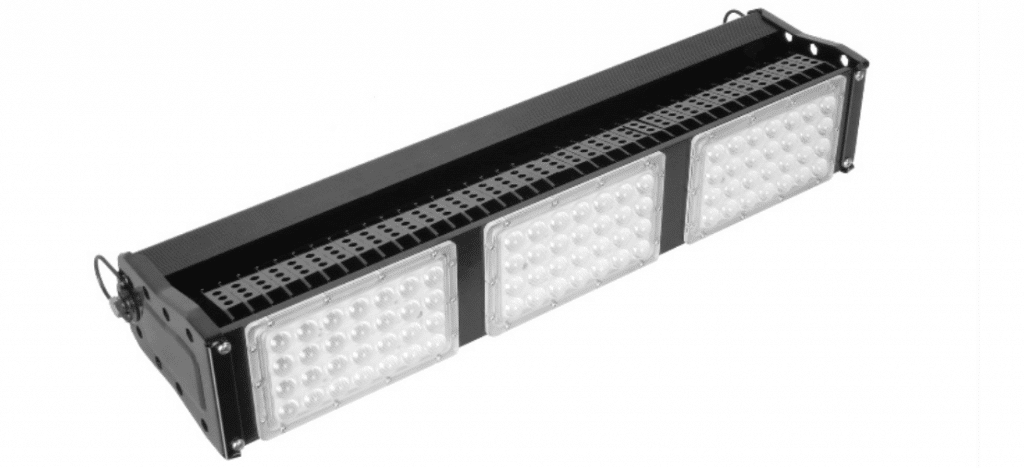
The emergency lighting duration for LED tunnel lights is 60-120 minutes, 90 minutes emergency time is standard. This duration typically ensures that vehicles and people can evacuate and that power supply repairs can be carried out safely.
Customized tunnel flood lights, linear lights or emergency types are all available
Lighting Standards for Tunnels
Unlike general road lighting, LED tunnel lighting has specific characteristics, including adapting to human vision, providing transition spaces, and ensuring safe illumination. These aspects are integral to LED tunnel light design and user safety. LED tunnel lighting typically includes entrance, interior, and exit lighting. Entrance lighting, in particular, must gradually decrease from external brightness levels. Specifically, the brightness of tunnel entrance lighting during the day is determined by the outside brightness, vehicle speed, field of view at the entrance, and tunnel length. The International Commission on Illumination (CIE) divides tunnel entrance lighting into threshold and transition zones. The threshold zone eliminates the “black hole” effect, allowing drivers to see obstacles clearly at the entrance. Transition zone lighting gradually decreases to prevent a sharp contrast between the threshold and interior lighting. Japanese tunnel lighting standards further divide entrance lighting into entrance, adaptation, and transition zones.
The interior zone is away from natural light, where driver vision is solely influenced by LED tunnel lights, providing uniform illumination throughout. The brightness level in this zone is constant and determined by traffic flow and vehicle speed.

Highway LED tunnel lighting has unique characteristics different from ordinary road lighting. You should consider:
- The road surface should have a certain brightness level (efficacy and power of LED tunnel lights).
- Tunnel walls should have a certain brightness level (light angle and upward angle of LED tunnel lights).
- Factors such as design speed, traffic volume, and route alignment (installation density and arrangement of LED tunnel lights).
- Overall lighting level for safety and comfort (glare control and color rendering of LED tunnel lights).
- Human visual adaptation, especially at tunnel entrances and exits (increased power density of LED tunnel lights in these areas).
- Daytime lighting is more complex than nighttime (smart dimming LED tunnel lights).
To achieve energy savings, improve lighting effects, and ensure driving safety and comfort in tunnel lighting, consider the following:
- Brightness: During the day, outside brightness is much higher than inside the tunnel. Drivers need adaptation time when entering the tunnel, known as the “adaptation lag phenomenon.” Without proper transition lighting, drivers may experience the “black hole” effect, temporarily losing normal vision, posing a safety risk. Transition lighting prevents this by gradually decreasing brightness from the entrance to the interior.
- Brightness Uniformity: Good visual function requires a reasonable average brightness and minimal difference between average and minimum brightness on the road surface to avoid glare and visual fatigue. Uniform brightness prevents the “zebra effect,” where alternating bright and dark bands disturb drivers.
- Glare: High brightness or contrast in the visual field causes glare, reducing visual function and comfort. Glare sources include oncoming headlights, tunnel lights, and bright tunnel exits. Glare diminishes the ability to see obstacles and affects driving safety. LED tunnel lights should minimize direct and reflected glare.
- Flicker Effect: Flicker occurs due to non-continuous light arrangements, causing repetitive brightness changes that disturb drivers. It relates to brightness variation, frequency, and total flicker duration, influenced by light placement, vehicle speed, and tunnel length. Acceptable flicker frequencies are below 2.5Hz and above 15Hz.
- Lighting Control: Advanced lighting control adjusts illumination levels based on time of day and traffic conditions, optimizing energy use. Sensors and dimmable electronic ballasts create intelligent lighting systems, maintaining brightness uniformity while reducing energy consumption.
Installation Space and Height
The installation spacing of LED tunnel lights varies according to the illumination requirements of different sections, and each section has different power requirements for the lights. The installation height of LED tunnel lights is generally between 4 to 6 meters, with 4.5 meters being the most.
| Location | Wattage Range | Power used a lot | Spacing |
| Entrance | 100W-300W | 100W 150W 200W | 1-1.5M |
| Transition section | 70-120W | 100W | 2-3M |
| Middle section | 30-60W | 50W | 8-12M |
| Exit | 100-300W | 100W 150W 200W | 1-1.5M |
The above describes the design standards for highway tunnel lighting. For regular secondary road tunnels, the enhanced lighting requirements for the entrance and exit sections are not as strict. The same power LED tunnel lights can be used throughout, with adjustments made to the installation density. The enhanced lighting sections have a higher installation density compared to the middle basic lighting section, generally using 30W to 60W LED tunnel lights.
For emergency lighting within the tunnel, the LED tunnel lights are typically installed with a spacing of about 25 meters.
Conclusion:
- Basic Lighting: whether it is day or night, tunnels require basic lighting, typically using 30-60W LED tunnel lights. When vehicles enter the tunnel during the day, the road surface brightness should gradually decrease to allow drivers’ vision to adapt. The entrance section is divided into the introduction, adaptation, and transition zones. The entrance and transition zones require enhanced lighting, generally using 100-200W LED tunnel lights.
- Determining Length: The lengths of the introduction, adaptation, and transition zones (S) are usually determined based on vehicle speed (V) with an adaptation time of T=2 seconds. This can be estimated using the formula S=VT/3.6 meters. The exit section should also have transition lighting, similar to the entrance section in the case of two-way traffic.
- Night Lighting: At night, no enhanced lighting is required at the entrances and exits. LED street lights should be installed outside the tunnel, with a brightness not less than half of the basic tunnel lighting brightness. The tunnel should also have LED emergency tunnel lighting, with brightness not less than one-tenth of the basic brightness.
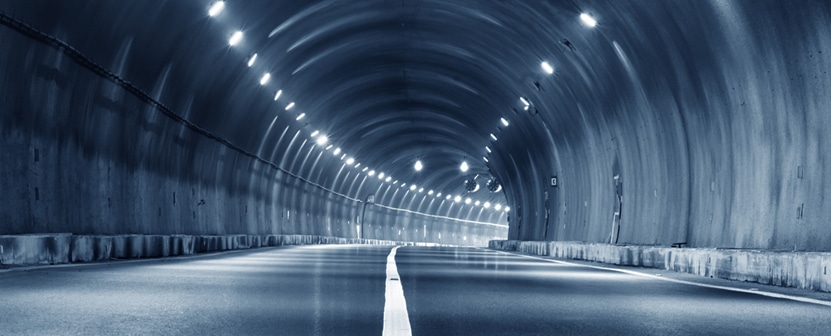
How to Buy Good Quality LED Tunnel Lights?
- Choose brands LED chips like Cree, Philips, Osram, etc.
- For the same brand chips, select LED lights with high luminous efficiency and high color rendering index (CRI).
- Choose high-quality first-tier brand drivers, such as Mean Well, Inventronics, MOSO, etc. Or at least select drivers equipped with first-tier brand electrolytic capacitors to ensure longevity.
- Choose LED tunnel lights with aluminum module housings that have a large heat sink for good heat dissipation and low light decay.
- For module housings, better buying those with finned heat sinks for better heat dissipation.
- Choose LED tunnel lights with waterproof plug-and-play connections between the driver and the housing for easy maintenance and driver replacement.
- For the same power, choose LED tunnel lights with a higher number of modules for better heat dissipation and greater stability.
- For dimmable LED tunnel lights, choose reverse dimming to ensure normal tunnel lighting if the controller fails.
- In areas with heavy fog, choose LED tunnel lights with a low color temperature to ensure strong light penetration.
FAQ

Hello, customers
My name is Ricky Wang, I’m the business manager of GRNLED. I have been in LED lights industry for more than 10 year. Feel free to contact us. I’m happy to provide you the best service and products.
Email: info@grnled.com | WeChat: ledfixture




